Scheduled maintenance - Thursday, July 12 at 5:00 PM EDT
We expect this update to take about an hour. Access to this website will be unavailable during this time.
April 1st, 2015 to March 31st, 2016
to create positive workplace change
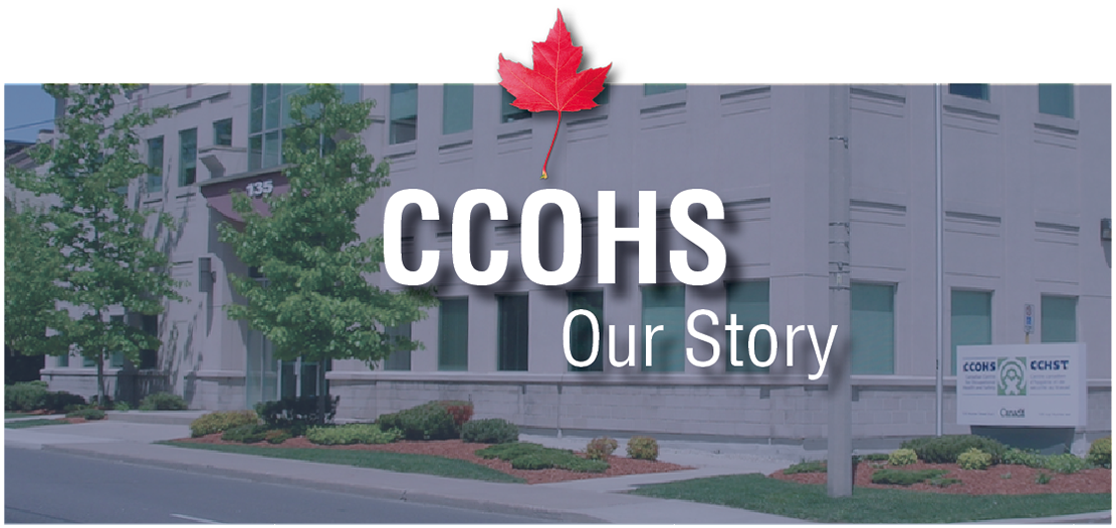
We are pleased that in 2015/16 CCOHS put more information, services, products into the hands of Canadians (and others) than ever before. Our efforts to provide solutions in high risk sectors forged new relationships in the construction and transportation sectors expanding the reach and impact of CCOHS products and services. We also worked with partners such as WorkSafeNB to create apps that put information that people need at their fingertips, and are partnering with a number of other provinces and territories to provide innovative health and safety solutions.
CCOHS continued to respond to current workplace issues providing tools, information, and support to address mental health and workplace wellness, promoting anti-stigma messages and helping prepare workplaces for the changes to the Workplace Hazardous Materials Information System (WHMIS).
For the second year, CCOHS sponsored the national Focus on Safety video contest, and vigorously promoted the viewing of the submissions to raise awareness of health and safety in workplaces and among youth in Canada.
We were pleased to continue our tradition of fostering interest in the field of occupational health and safety through the Dick Martin Scholarship Awards. Last year, we awarded a $3,000 scholarship to each Kari Bergerud of Grant MacEwan University (Alberta) and Harry Wiseman of Keyin College (Newfoundland).
Of particular note this past year was the CCOHS national tripartite Forum 2016: The Changing World of Work, which took place in Vancouver, British Columbia. The event provided a unique platform for discussion amongst employers, workers, and governments from across Canada to exchange ideas and perspectives around current health and safety issues they identified, such as mental health, violence, harassment, and training and education around safe work.
This was a year of leadership transition for CCOHS. We would like to thank outgoing president Steve Horvath for his leadership and contributions to the Centre during his five-year term. We would also like to thank Kin Choi for his leadership and service as chairperson of the Council. Both made lasting impacts to the Centre and we wish them well.
During the year we also welcomed new members to the Council, Ross Nairne, (Alberta), Troy Winters (CUPE), and Marcel Pouliot (Canadian Transportation Association). We have been working closely with them and the rest of the Council to deliver value for, and meet the changing needs of, all of our stakeholders.
Finally, we would like to extend thanks to the CCOHS employees for their efforts, passion, and focus in delivering results that help create safer workplaces and improve the lives of workers in Canada.
Shelley Rowan, on behalf of the Council of Governors
Gareth Jones, Acting President
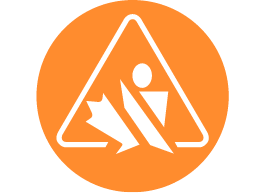
In February 2015, Canada aligned the Workplace Hazardous Materials Information System (WHMIS) with the Globally Harmonized System of Classification and Labelling of Chemicals (GHS), also known as WHMIS 2015. While Canada began its journey of embracing the changes, CCOHS was ready to help workers, employers and suppliers navigate the complexities of adopting the new rules. From a Canada-wide portal and online courses, to speaking engagements and hosting workshops across the country, CCOHS worked to educate workers about, and prepare workplaces in Canada, for WHMIS 2015.

"21.4% of the working population in Canada currently experience mental health problems and illnesses.*"
Depression, stress and other mental health issues have emerged as leading health issues in Canada, and the linkage between stress, mental health and absence still remains a significant challenge amongst people in this country. CCOHS has worked to stay ahead of this current issue, continuing its work with the Mental Health Commission of Canada’s case study research projects – and using the experience to provide reliable and credible mental health information and resources to workers and employers in Canada. This year, CCOHS launched a new and improved Healthy Minds at Work microsite to help organizations work their way towards a psychologically safe and healthy workplace.
* Mental Health Commission of Canada (2013). Making the Case for Investing in Mental Health.

New workers aren’t just young people or those who are entering the work force for the first time; they include people who are re-entering the workforce or are starting a second or even third career. Regardless of age or stage, new is new – and these workers are especially vulnerable, with 5 to 7 times the risk of injury in the first month of their job. And with 20% of Canada’s workforce (3.6 million) aged 55 years and over (StatsCan, 2015), employers are faced with new challenges in how to leverage the experience of the older workers while ensuring their needs are met to work safely and stay healthy. CCOHS created webinars, articles, social media events and infographics to help shed some light on, and offer solutions, to address the challenges faced by the employers of - as well as - new, young, and aging workers in Canada.
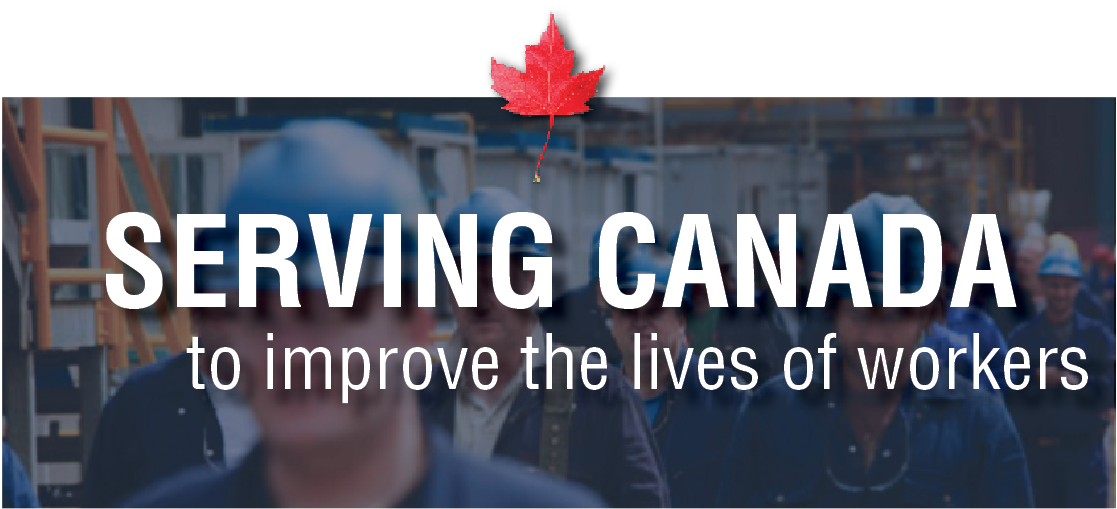
Navigating health and safety laws, workplace policies and workplace hazards can be challenging. People have questions and they turn to CCOHS for answers they can trust.
With a self-serve option through the OSH Answers Fact Sheets and a person-to-person Safety InfoLine service, CCOHS tries to makes it as easy as possible for people to access the information and answers they need. More than ever there is a growing trend of users “self-serving”, as the number of users of the online fact sheets increase.
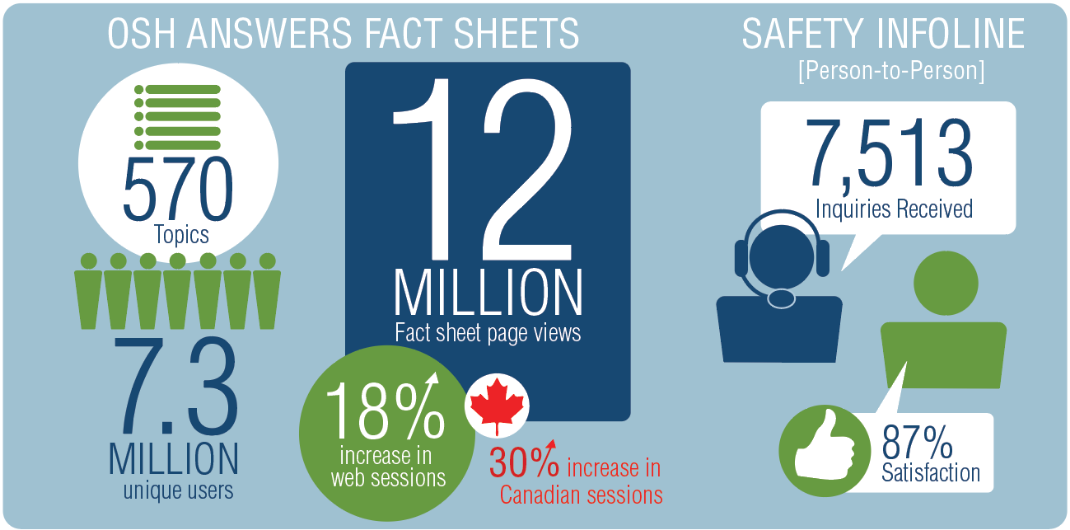
Available through the CCOHS website, OSH Answers Fact Sheets contain thousands of questions and answers on more than 500 topics - from workplace stress, to ergonomics, to seasonal safety tips. These online fact sheets were created for workers in Canada to have instant access to reliable and relevant health and safety information, anytime. New topics are continually added and existing topics are regularly revised for relevancy and currency. The fact sheets are widely repurposed by media and organizations alike and form the foundation of many of the Centre’s informational products, such as publications, posters and articles. They are one of CCOHS’ most popular public services garnering more than 12 million page views – 21% of those being in Canada.
Although Canada adopted WHMIS 2015 in February 2015, not every jurisdiction across Canada was ready to adopt the new changes. The Workplace Hazardous Materials Bureau of Health Canada (formerly the National Office of WHMIS) rolled out a multi-year transition plan to prepare manufacturers, importers, distributors, and employers for the changes, and CCOHS was ready with resources to help. CCOHS’ WHMIS 2015 Fact Sheets were born in early 2015 and have continued to be a popular resource amongst users in Canada. WHMIS 2015 continues to be a topic of concern for Canadian workplaces, and CCOHS plans to add to the collection in the coming year, with the confidential business information fact sheet currently in development.
For workers and workplaces in Canada who require a higher level of support, CCOHS provides a confidential, free person-to-person information service. Safety InfoLine is accessible by telephone and online, and a team of health and safety specialists responds to the incoming requests. The team researches and provides information on workplace health and safety to help users of the service make informed decisions about specific issues in the workplace. On topics from safety and ergonomics, to chemical hazards and psychosocial issues, Safety InfoLine responded to 7,513 inquiries from every province and territory this year. Employers made up the bulk of the users (41%), followed by labour (34%), the general public (23%), and governments (2%).
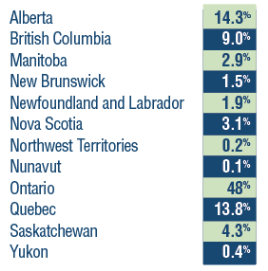
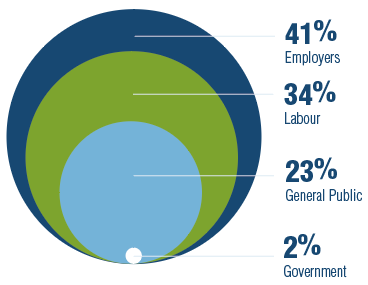
As part of CCOHS’ effort to continuously improve, Safety InfoLine users are surveyed on the usefulness and quality of the service. Results of this year’s survey remained strong with 87% satisfied or very satisfied with the information they received. More importantly, 63% (up from 59%) said that their use of CCOHS information will lead to current or future changes to the workplace that may result in improved health and safety performance.
"It is a comfort to know that a helping hand is readily available from the experts in areas that are often a part of our world but mostly out of our scope of practice."
"An excellent example of government resources used wisely to assist progress and understanding of hazards of chemicals in the workplace."

CCOHS has a commitment to provide people in Canada with bilingual, credible and useful health and safety information in accessible and user friendly formats.

Constantly evolving to meet the needs of users, the CCOHS website (ccohs-cchst.ca) continues to be a growing powerhouse of workplace health and safety information and services. This year, overall traffic to the CCOHS website was heavier than ever with substantial growth in usage. The web sessions were up 25% to 10.6 million and the page views of content were up 31% to 17.3 million. Canadian usage of the site was up 43% over the previous year, with a third of the web sessions originating from Canada. The wonderful thing about the Internet, is that CCOHS can serve and help the rest of the world as well: 25% of visitors to the website came from the United States of America, and 42% were from other countries. Also, 16% of the web sessions were on the French language site.

In addition to the CCOHS website, the Centre has a collection of topic-specific microsites which provide a single point of access, in English and French, to some of the best information, tools and research from Canada and around the world on current topics such as mental health, healthy workplaces, young workers and planning for infectious disease outbreaks.
It’s a known fact that young workers are vulnerable to being injured on the job - they’re new to the working world and can be unaware of the dangers, or their rights, in their workplace. The Young Workers Zone microsite is dedicated to providing occupational health and safety resources and information to not only young workers, but their parents, teachers, and employers as well. Page views of this popular site increased 14% with 44,000 page views.
44,000
page views
To complement the free resources found in the Young Workers Zone, CCOHS offers another online resource, Health and Safety Teaching Tools, which aims to help teachers lay a foundation of workplace health and safety for students. The basic content of this program is available for free on the website, with the comprehensive version available at a cost. With 104,678 views, Teaching Tools realized a 13% growth in usage.
* * * * * * * * *
In the upcoming fiscal year CCOHS plans to revamp the Young Workers Zone microsite to address new workers, as well as create an immersive educational experience for young people that would provide them a basic level of knowledge and understanding of the workplace and their health and safety rights. The new “Zone” will incorporate the more comprehensive fee-based version of the Health and Safety Teaching Tools into the portal as a free public service.
At some point in our lives, most of us are likely to be affected by a mental illness, whether it’s through a family member, a friend, a colleague, or through personal experience. And many people face these mental health issues during their working years. In August 2015, the Healthy Minds at Work microsite was given a makeover to include more up to date statistical information as well as to provide users with an immersive and user-friendly experience. The site offers information on how to create a healthy and supportive work environment, promote mental health, and effectively handle mental health issues that may exist. For a three week period starting in July 2015, CCOHS ran a social marketing campaign to raise awareness of, and model how workplaces could respond effectively to mental health issues. The length of the campaign was reduced from 10 weeks to three to comply with the Federal election communications embargo. However, during this period, daily traffic to the site increased tenfold. This year the site had more than 30,000 page views. More communication assets such as videos, and twitter cards, as well as a new mental health campaign are being developed to keep this issue in the forefront.
30,143
page views
Most of our lives are a combination of work, family and community involvement. An infectious disease outbreak or pandemic would disrupt and affect all of these areas. The Flu and Infectious Disease Outbreaks microsite provides users with guidance, advice, and tools, needed to continue business and organizational activity, and be prepared in the event of an infectious disease outbreak. Activity on this site has decreased over the years however any news of new viruses (Zika) or outbreaks (Ebola) causes a spike in activity. This year the site had 13,149 page views.
There is a strong connection between the health and well-being of people and their work environments. When people feel valued, respected, and satisfied in their jobs and work in safe, healthy environments, they are more likely to be more productive and committed to their work. The Advancing Healthy Workplaces microsite provides employees, employers and practitioners with easy to find information, tools and resources such as articles, posters, and research reports they may need to promote a healthy and safe work environment. The site had 53,131 page views, representing 26% growth.
Years ago if you were looking for hazard alerts or young worker programs from the various provinces or territories, you had to search each website individually. The launch of CanOSH 17 years ago put an end to all of that. The microsite provides an all-encompassing access route to government related occupational health and safety information, news, hazard alerts and services across all jurisdictions in Canada. The popularity of the tool speaks to the value of this onestop- information source with close to 39,000 page views this year.
Over the years, the Centre has built a collection of 34 bilingual posters that organizations can use to help promote health and safety in their workplace. From hot button issues such as mental health, to hazards such as slips, trips and falls, workplaces use these posters to reinforce health and safety messages, techniques, and best practices. In fact, more than 50,000 posters were downloaded from our website this year in addition to the tens of thousands of the Day of Mourning posters that were reproduced by labour unions.
50,833
downloads
Not surprisingly, the most popular titles were those related to WHMIS 2015 and GHS. While CCOHS will continue to add new posters that address emerging workplace health and safety issues, we are noticing that there is a shift emerging in the preferred formats of this information. Poster popularity is giving way to our more compact Fast Fact Cards and On Topic pieces that provide bite-sized information and tips; demand for customization of these materials is increasing.
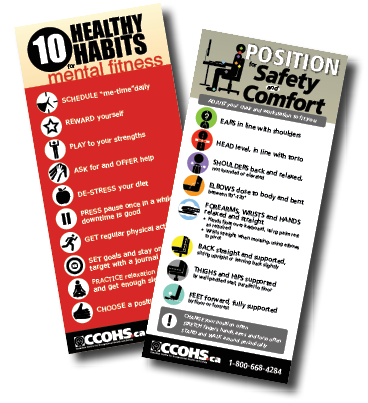
CCOHS also spreads awareness to a variety of different audiences by sharing data in a more visually appealing way through the use of infographics. Doubling the size of the collection this year, CCOHS experimented with 6 new topics including: New Worker Safety in Canada, Fatigue and Work, Indoor Air Quality, Hazard Control, The Aging Workforce in Canada, and CCOHS’ Forum 2016 Highlights. Overall, the infographics web page had 23,749 page views, however the highly popular Fatigue and Work infographic garnered almost a third of the views. Each infographic page provides users with a snapshot/lightbox view and an explanation of what infographics are and their intended purpose, encouraging users to share them electronically. Another enhancement for users is they can print the infographics in a larger size should they wish to display the information as a poster.
23,749
page views
Since 2009, CCOHS has provided workers across Canada with audio health and safety information through its Health and Safety to Go! podcast program. The podcasts allow CCOHS to connect with Canadians in a less traditional format, thus expanding the Centre’s reach and impact with more people across a larger landscape. CCOHS’ podcasts are used on mobile devices such as smart phones, tablets, and MP3 players. This year CCOHS produced 22 new podcasts bringing the total episode count to 170. We know that many workplaces, educational institutions and organizations link to specific episodes of interest which partly explains the 31% growth in podcast listens (57,758 listens this year). Next year CCOHS will be looking at ways to improve this free service starting with a plan to retire and replace outdated episodes with newer content, and place greater focus on featuring partnerships for interview content.
57,758
listens
Workers, employers, and health and safety professionals and enthusiasts alike stay current and informed with their subscription to CCOHS’ largest communications channel, the Health and Safety Report newsletter. This free monthly e-newsletter delivers current workplace health and safety news, information, advice and tips to 28,781 subscribers from 183 countries – 75% being from Canada (the database was cleansed resulting in the elimination of more than 5,000 broken records from the previous year).
28,781
Subscribers
From
183 countries
75%
from Canada
Approximately 92% of subscribers share the newsletter with others, resulting in an additional 705,360 monthly reach. The annual readership survey provides a testament to the quality and high appreciation for this popular newsletter. It routinely earns a 99+% overall satisfaction rating with the content and format. The value of the newsletter extends beyond the individual subscriber as 98% said that the newsletter provides value to their organization, and 71% of users indicated that they use the information in the newsletter to make current or planned changes in their workplace that might improve occupational health and safety.
Articles from the Health and Safety Report are a staple for other publications, media outlets and organizations, who repurpose them for their own use. Our informal tracking of the 45 publicly shared reprints resulted in approximately a million impressions of extended reach.
"...my go-to place for updates in occupational health and safety to keep me informed of any upcoming changes in legislation or best practices."
"98% said the newsletter added value to their organization."
705,360
monthly reach
Each year, CCOHS strives to support students in their pursuit of higher education in occupational health and safety with the Dick Martin Scholarship Award. This annual, national award was started 14 years ago by CCOHS’ Council of Governors to encourage interest in the field of workplace health and safety. The scholarship is offered to post-secondary students enrolled in a degree or diploma granting occupational health and safety program in Canada. Two scholarships of $3,000 are awarded each year to a university and college student, and $500 is awarded to each winner’s school. This year, the number of applications was up 33% with 82 received.
![Kari Bergerud: Grant MacEwan University [Alberta], Harry Wiseman: Keyin College [Newfoundland]](/images/annuals/2015/scholarshipRecipients.png)

Left - CCOHS Council member Leslie Galway with scholarship recipient Harry Wiseman

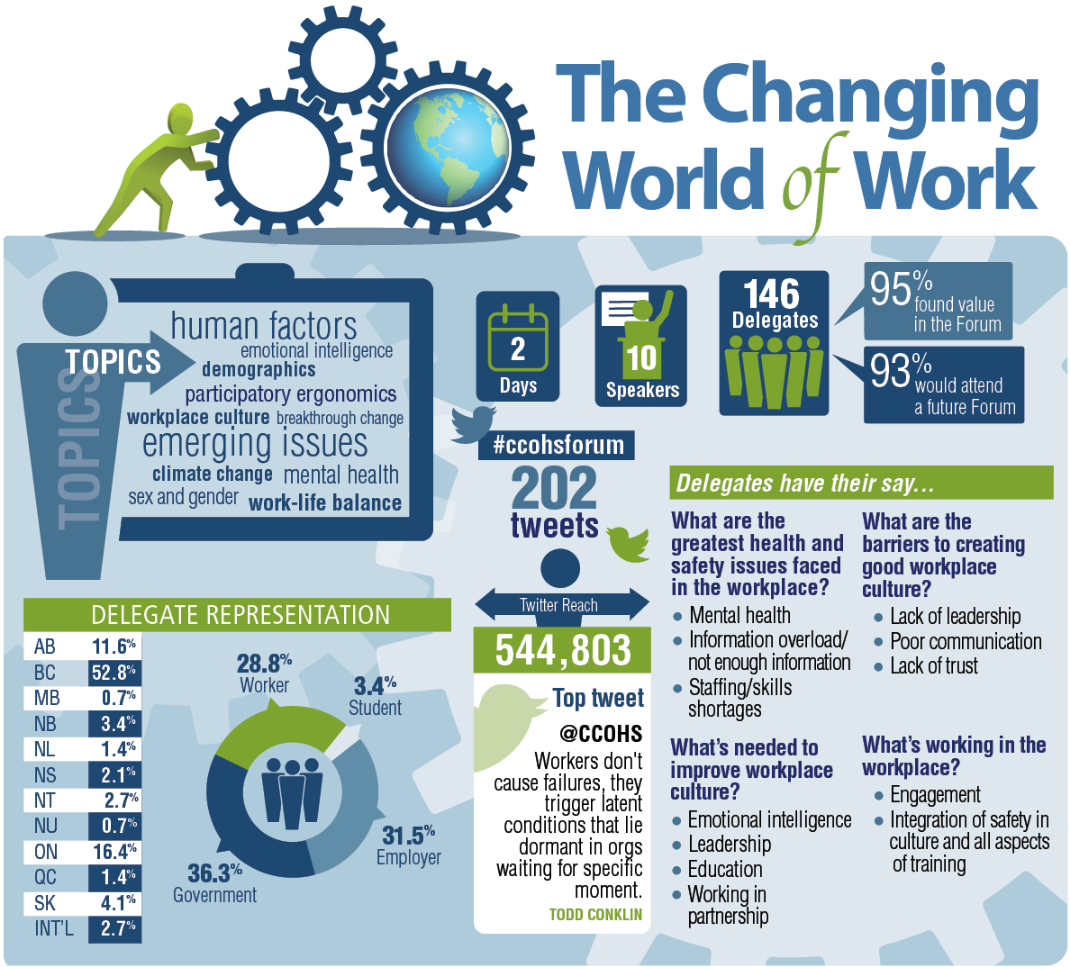
This year, CCOHS hosted a two-day tripartite, national event, Forum 2016: The Changing World of Work, that brought a wide spectrum of experts, employers, workers, labour and government representatives together in Vancouver, British Columbia, to learn about emerging issues, share best practices, and brainstorm solutions.
The Forum featured expert speakers, panel discussions, interactive events, and a showcase of innovation and best practices. The event offered participants a unique opportunity to explore and understand the health and safety challenges emerging from changes in society, technologies, and organizations of work. The Honourable MaryAnn Mihychuk, Minister of Employment, Workforce Development and Labour delivered opening remarks.
One of the goals of the Forum was to achieve a balance in delegates from both tripartite and geographical perspectives. This year’s event had 146 delegates from eleven provinces and territories, with fairly balanced tripartite representation from labour (28.8%), employers (31.5%), governments (36.3%) as well as students (3.4%).
A survey of the attendees revealed that 95% found value in the forum and 93% would attend a future event. Our focus will turn now to sharing the outcomes from the delegate interactive activities more widely, and planning how to address the top issues and concerns raised at the Forum.
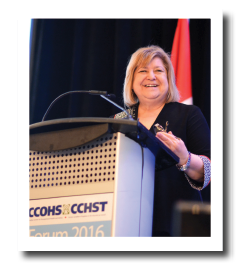
The Honourable MaryAnn Mihychuk, Minister of Employment, Workforce Development and Labour
Connecting with Canadians through social media is one of the many ways CCOHS helps to promote a comprehensive approach to workplace health and safety. Being able to actively engage with clients on a daily basis across many channels helps keep CCOHS top of mind as the go to resource for tools, information, and advice on creating a healthy workplace. We connect over five social media channels - Facebook, Twitter, LinkedIn, Google+ and You Tube – giving us the opportunity to foster an online community while sharing information more widely with the world.
Twitter: The world today thrives on instant communication from brands they trust. In 140 characters or less, CCOHS engages audiences on what’s happening in the world of workplace health and safety as well as at the Centre. We share developments, ideas, new legislation and more in real time. This year, CCOHS had 8,685 combined followers on their English and French Twitter handles, and produced 294 tweets resulting in 1,124 retweets from followers. This high level of engagement delivered an annual retweet audience of 3.4 million, reaching 14.5% more followers than this time last year.


Facebook: CCOHS’ Facebook page is an easy way to share updates and insider information about the Centre with fans, and allows CCOHS to stay connected with workers across the world. The Facebook page gained 1,835 new fans this year, reaching a total of 7,613 likes across the English and French pages. Posting content 129 times, CCOHS reached 335,324 fans, with the average post reach being 128 clicks and 61 shares and/or comments. CCOHS’ fan base grew exponentially this year due in part by posting more frequently as well as sharing image based posts which garner more engagement from the fans. Also interesting to note, our most popular photo post shared of the Day of Mourning on April 28, 2015, generated a reach of 48,736, well beyond the average reach of 2,599 per CCOHS post.
LinkedIn: Networking with working professionals, the business community and other organizations interested in workplace health and safety information and resources, CCOHS added 1,638 new LinkedIn followers this year (43% growth), for a total of 5,456 followers across both its English and French LinkedIn pages.


YouTube: The Centre uses YouTube to share and distribute videos produced by CCOHS as well as to host videos for the Youth Video Contest. CCOHS has produced eleven videos, the most popular of which is the Lifting Objects at Work. The videos were viewed 20,070 times this year (up 14% from last year). Moving forward, CCOHS plans to produce a series of 30 second videos with concise, key messages to support social marketing campaigns on current issues.
Google+: CCOHS increased usage of Google+ this year, actively sharing CCOHS related images, resources, tools and news to its followers. This year, CCOHS’ English and French pages had 52,051 new views and 89 new followers.
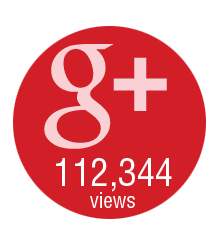
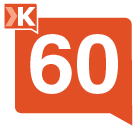
Klout Score: CCOHS actively monitors its Klout Score to track overall influence and performance across social media channels over time. A Klout Score ranges from 1 to 100, and the higher the number, the more influential a person or organization is – specifically, its ability to drive action and engagement by creating content that people want to share and respond to. Specifically, Klout uses 400 signals from eight different networks that take into account the audience reach, amplification probability, and network impact to determine the total sphere of influence..
CCOHS continues to be a “go to” resource for trustworthy health and safety content, perspective, advice, and guidance. With our active media program, subject specialists provide advice and interviews to satisfy media requests. We maintain a high profile with regular media releases and by seeding editorial content with media outlets. This year the Centre recorded 576 media sightings* (up 26.5% from last year).
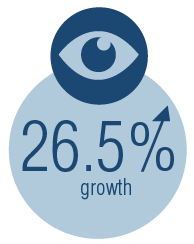
These various media mentions represented an estimated reach in excess of 203,022,077 (95% growth) impressions in national and international news outlets such as the National Post, CBCNews.ca, The Weather Network, Globe and Mail, PLANT Magazine, COS Magazine, Canadian Business Magazine, 680 News, Edmonton Journal, Toronto Star, Huffington Post Canada, CBC Radio, the Ottawa Citizen, and the New York Post to name a few.
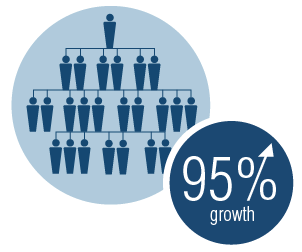
203,022,077
estimated reach
* A media sighting is when a CCOHS subject specialist was quoted, the Centre was referenced as an information source, or when our online fact sheets, articles or media releases were repurposed by other publications.
Attending conferences as exhibitors and presenters are one of the many ways in which CCOHS works to create awareness about current issues and the work we do, while establishing credibility with new and existing clientele.
This year, CCOHS attended, exhibited, or presented at events that supported employer, labour, governmental groups and Indigenous Peoples. CCOHS’ strategic plan’s sector-specific focus helped us forge new relationships and potential partnerships from our exhibits and presentations at mining, construction, oil and gas, healthcare and public health events. This year, CCOHS participated in 45 conferences and events, as well as accepted 37 speaking engagements, achieving a total conference reach of 33,271, an 11% increase over the previous year.
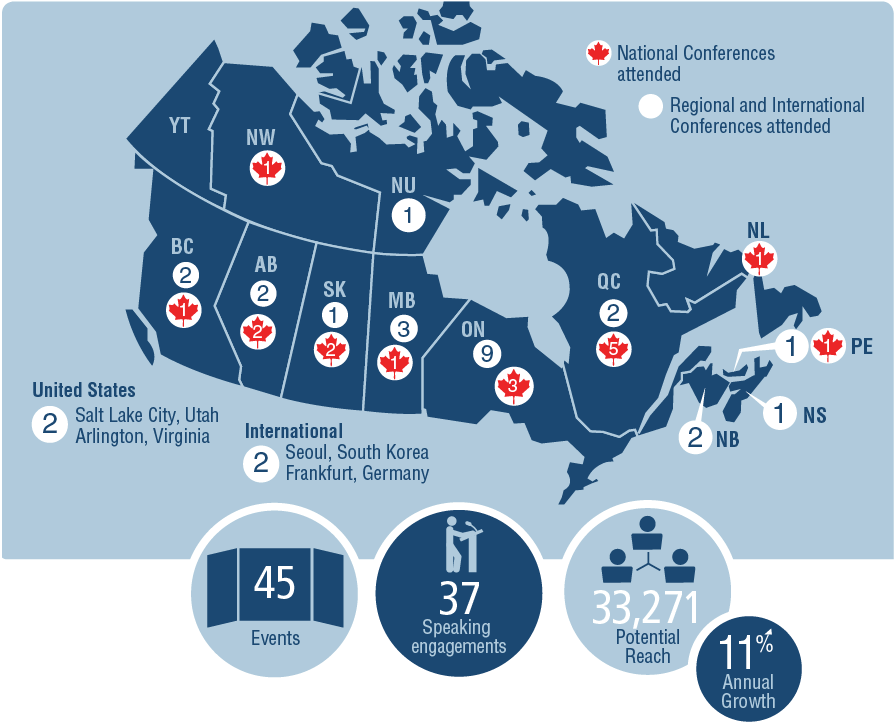

Next year, we will continue to serve and increase our presence in every province and territory in Canada. We will speak or exhibit across the country to extend our regional and professional reach by participating in industry-specific events focusing on mining, construction, oil and gas, healthcare, public health, and Indigenous populations.
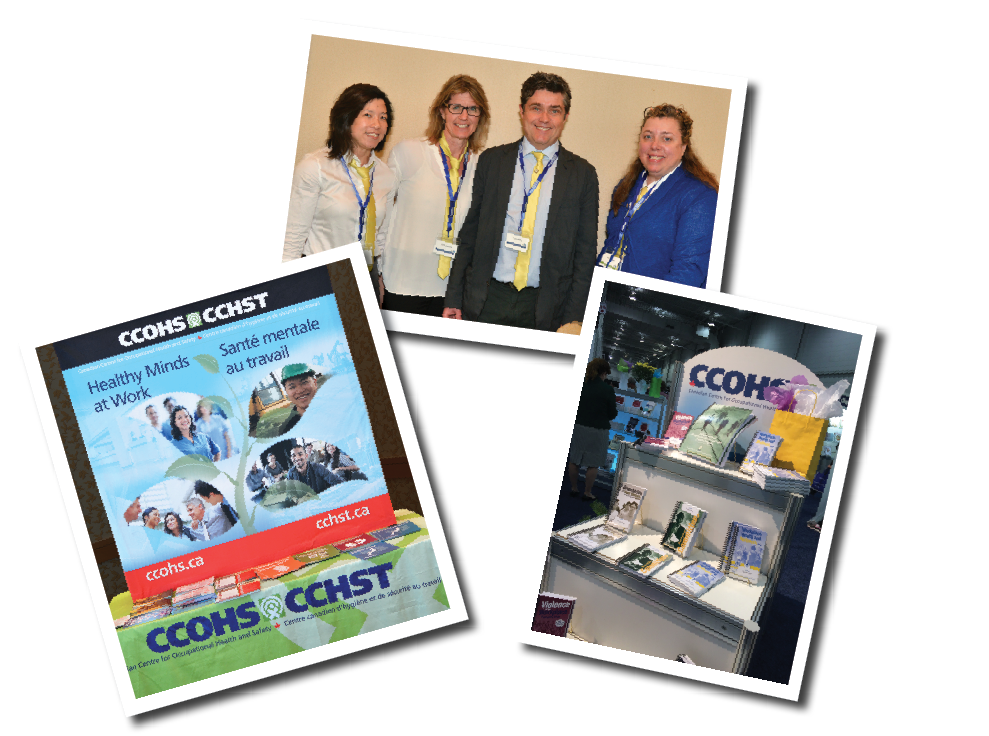
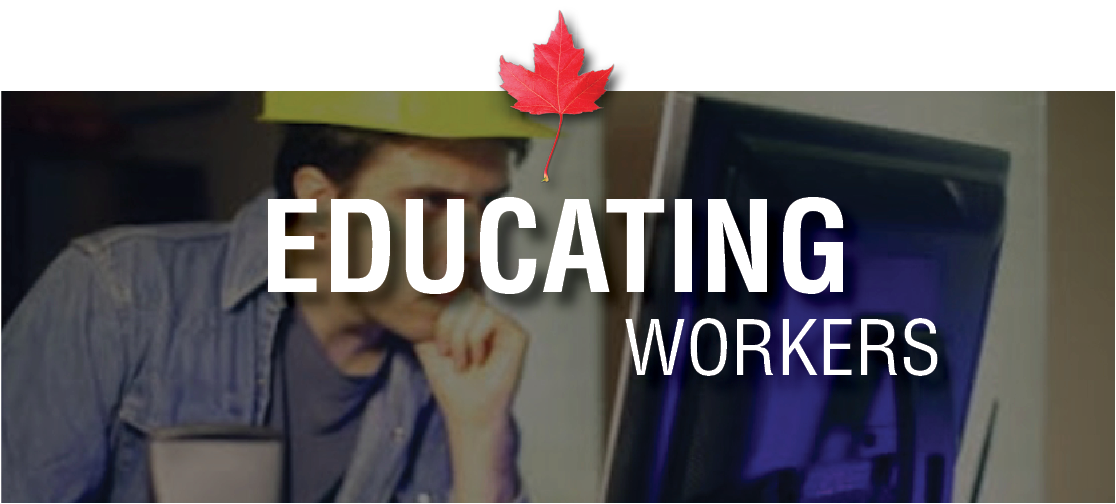
Preventing injuries and illness caused by work must be a priority for everyone in the workplace. An important part of prevention is equipping workers with basic knowledge of their roles and responsibilities and ensuring they understand and have the ability to identify hazards and perform their job safely. Educating employees is a critical step in injury prevention and key to the future success of any organization. CCOHS endeavors to make health and safety education affordable, and easy and convenient to access, with its extensive program of 106 online courses (e-courses) on a wide range of relevant topics.
CCOHS courses are created with assistance and advice from outside technical experts when required, while the tripartite external review of courses by representatives of government, employers, and labour helps achieve balance, accuracy and understanding by all parties in the workplace. To help promote basic awareness of important health and safety issues such as workplace violence and mental health, CCOHS offers free awareness e-courses. These courses provide users with an introduction to the issue at hand and also to CCOHS’ online learning platform. In total, uptake of e-courses totalled almost 190,000 seats. There were 95,214 accesses to the free courses this year and 94,439 seats were purchased, with the WHMIS 2015 e-course proving to be, by far, the most popular title.
190,000
seats accessed
Most Popular Course
WHMIS 2015 for Workers
Whether workers are sitting at a desk or working remotely, there are times when they need access to information at their fingertips. But for those who need more information than what’s offered on a fact sheet, or who don’t have access to technology while out in the field, CCOHS has a collection of publications and other documents in easy to read print and electronic formats. The collection of 30 publications provides information that is practical, authoritative and balanced. These popular health and safety guides inform people of workplace hazards to reduce risk and help prevent injury, and are designed for use on-the-job as reference tools and information sources. CCOHS is exploring alternative, mobile delivery formats to meet the changing needs and expectations of workers. This year, 6,605 publications were purchased.
6,605
purchased
CCOHS developed a comprehensive WHMIS 2015 Instructor’s Toolkit for trainers to use while educating others about WHMIS 2015. The toolkit, comprised of an instructor’s guide, participants’ guide and PowerPoint slides, was developed last year and released in the spring of 2015. To date, 383 toolkits and 836 participant workbooks have been purchased, for a total of 1,219 copies.
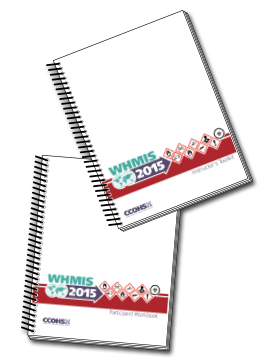

We’re stronger together. By collaborating with others we benefit from the knowledge, experience, expertise and perspectives they have to offer, which enables us to develop better solutions. Projects with leading organizations in Canada such as the Canadian Institutes of Health Research (CIHR), Health Canada and WorkSafeNB, have expanded the quality and quantity of resources and programs available to workers and employers across the country. Working with international partners as a Collaborating Centre of the International Labour Organization (ILO), the World Health Organization (WHO), and with the European Union, CCOHS has shared its knowledge, expertise, and Canadian perspective with the world and helped to advance health and safety in the workplace on a global level. These partnerships have also enabled CCOHS to provide Canadians with the best information from international sources.
With information about WHMIS spread across various government websites, it was clear that a one-stop-shop was needed to help employers and workers in Canada navigate the complexities of adopting WHMIS 2015. Last year, CCOHS launched WHMIS.org, a national website that provides a single point of access to the most current information about WHMIS 2015 from all of the jurisdictions across Canada. Containing helpful tools and resources for workers, employers, suppliers and trainers, the website was a collaboration between CCOHS and the Workplace Hazardous Materials Bureau of Health Canada, as well as each of the federal, provincial and territorial occupational health and safety regulatory jurisdictions across Canada. This year, the website had almost 70,000 sessions, 78% of which were from Canada. The top three provinces accessing the site were Ontario (48%), Alberta (15%), and Quebec (10%).
As of April 2016, the following six jurisdictions: British Columbia, Manitoba, New Brunswick, Northwest Territories, Nunavut, and Quebec, had implemented WHMIS 2015. The remaining jurisdictions are at different stages in their legislative process.
69,542
sessions
In the previous year, CCOHS and WorkSafeNB partnered to create the New Brunswick Web Tool/App, a bilingual microsite and mobile app to help employers in the construction industry find regulatory requirements in one easy to find spot. The microsite, A Guide to OSH Legislation, features 30 construction-related topics with links to resources, including interpretations, summaries, legislation, hazard alerts and safety talks, all in an easy-to-read format. The microsite was released in the spring of 2015. In February 2016 an additional 9 topics were added and it was launched as stand-alone iOS and Android apps. In this first partial year, and combining the web and app data, there were 11,024 users viewing 41,172 pages/screens.
Through this opportunity, CCOHS is working with Ontario, Saskatchewan and the Northwest Territories to develop comparable applications in those jurisdictions. Work is expected to start in the 2016-17 fiscal year.

While a professional ergonomic assessment is considered the most effective way to address work-related discomfort, there’s also an app for that! CCOHS collaborated with the Occupational Health Clinics for Ontario Workers (OHCOW) to develop PainPoint – Prevent Musculoskeletal Disorders (MSDs) at Work, a free app that helps users take action at preventing injuries. The app delivers a very basic ergonomic assessment by running users through a series of diagrams and questions to pinpoint musculoskeletal pain, identify possible sources, and discover practical solutions. The results are depicted on a body map, with recommendations to address work-related musculoskeletal hazards that could be a contributing factor to the users’ discomfort. PainPoint was released in October 2015 and is available for use on iOS, Android, and Blackberry devices.
CCOHS and WorkSafe Saskatchewan partnered this year to create an online portal to act as a plain-language guide to the “Five Pillars” of a sound health and safety program: job hazard analysis, inspections, investigations, practices and procedures, and training. Each of these pillars will have a summary document, and links to legislation, education, training, and other resources such as form and fact sheets. The web tool is under development, and is set to launch in the Fall of 2016.
CCOHS and Health Canada partnered to develop free resource materials to prepare, inform and support workplaces during the transition to WHMIS 2015, and equip employers and employees with the necessary information needed to work safely. A two-tiered campaign to promote these important free resources was deployed in November 2015, and was targeted to small business owners. A second tier is currently scheduled for July 2016 targeting chemical suppliers and handlers.
The small business campaign leveraged a combination of CCOHS communication channels (newsletters and social media) and external business-focused properties including coverage in The Canadian Business Journal, and content placement in newsletters in Canadian Chambers of Commerce, with a nation-wide reach of over 70,000 members, across 20,000 businesses in more than 135 communities.
To help educate workers about the upcoming changes to WHMIS 2015, CCOHS partnered with the Workplace Hazardous Materials Bureau of Health Canada in 2014 to develop a free e-course: WHMIS After GHS For Workers.
The course was funded by Health Canada and was offered free of charge to the first 100,000 participants, for up to one year. With the anticipation of the Hazardous Products Regulation coming into force in February 2015, there was an increased interest in the course. As a result, CCOHS and Health Canada extended the free offer until March 31, 2016.
In addition to the free course, organizations that wanted to track their employees’ course usage paid $10 per seat to access the e-course, and had the capability of running usage reports on CCOHS’ Learning Management System.
Since the launch in 2015, 207,000 people have registered for this course. This year, a total of 173,582 individuals had registered for the free e-course, and 23,623 multiaccount user courses were sold. The top three provinces accessing the e-courses were Ontario, Alberta, and British Columbia.
173,582
individual registrants
23,623
multi-user account seats sold
In 2015, CCOHS applied for national web advertising fund monies, which are allotted to federal government departments seeking to deliver national campaigns that support government-wide initiatives. CCOHS was accepted as a co-advertiser and worked with the Government of Canada to deliver the Workplace Mental Health Campaign 2015.
CCOHS worked in partnership with the Advertising Communications and Partnerships Directorate (ACPD) to co-brand these paid social placements with both CCOHS and Government of Canada wordmarks. This advertising partnership demonstrated commitment and partnership to help increase awareness and help reduce workplace and community stigma regarding attitudes and behaviours toward people living and working with mental health issues..
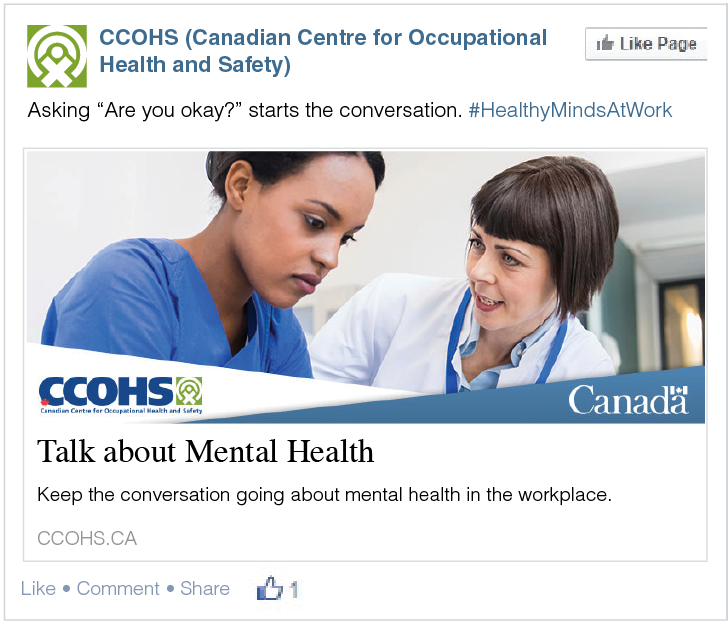
The campaign provided a prime opportunity to inform workplaces of the tools available from CCOHS to help increase their understanding and recognition of mental health issues at work, develop and implement approaches to promote mental health at work, and find quality resources and tools on a range of related topics.
The campaign leveraged a media mix of search engine marketing (Google AdWords) and promoted social content on Facebook, Twitter and LinkedIn. The campaign launched July 15, 2016 and was embargoed as of August 2, 2015 as a result of the Federal election. During the two weeks of the campaign, daily traffic to the Healthy Minds at Work portal increased tenfold.
Next year, CCOHS hopes to continue the promotion of workplace mental health with a social media campaign during Mental Health Week and beyond.
Mental health disorders place a heavy burden on the health and productivity in workplaces across Canada. The Guarding Minds @ Work website is a unique and free comprehensive set of resources from the Centre for Applied Research in Mental Health and Addiction, designed to protect and promote psychological health and safety in the workplace. It allows employers to assess and address the 13 psychosocial factors known to have a powerful impact on organizational health, the health of individual employees, and the financial bottom line.
Guarding Minds @ Work was developed by experienced research-practitioners from the Centre for Applied Research in Mental Health and Addiction, funded by Great-West Life, and is operationally supported and maintained by CCOHS.
This year, the Guarding Minds @ Work website was updated to provide clearer language, improved functionality, and greater consistency with current and emerging regulatory and legal standards and practices pertaining to workplace psychological health and safety. In addition, five new questions were added to the Guarding Minds @ Work Survey.
Health Canada and CCOHS worked together to develop e-course modules for inspectors who will be enforcing the Hazardous Products Act and Hazardous Products Regulations. This year, four new courses were released.
CCOHS is the official Knowledge Translation (KT) Partner of the Canadian Institutes for Health Research (CIHR) - Gender, Work and Health Chair Research Program, responsible for advancing the program’s objective of translating research into gender- and sex-sensitive policies, practices, commercialization and other areas of impact that can preserve and improve the health of workers in Canada. In February 2016 CCOHS developed a prototype for a Gender, Work and Health microsite that is expected to go live in the fall of 2016. The site will serve as a single access point to the latest informational materials, policies, tools and research related to addressing gender in workplace health and safety.
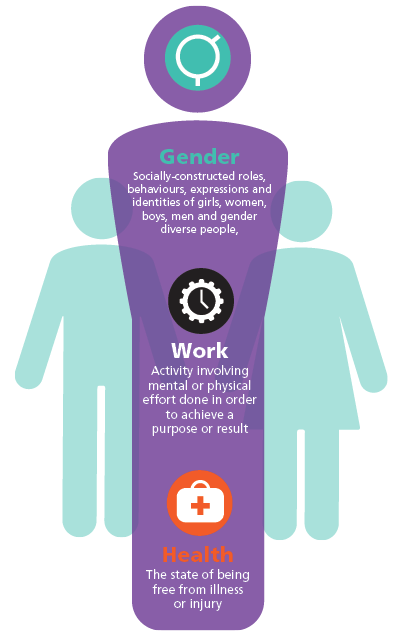

Instilling a culture of safety has to start at a young age, and who better to deliver important messages to youth than youth? CCOHS, along with each province and territory, challenged high school students across the country to use their creativity to produce an original video that illustrates the importance of workplace health and safety. The Focus on Safety National Youth Video Contest (formerly It’s Your Job Video Contest) gave contestants and their schools a chance to win cash prizes, provincial/ territorial and national recognition, and national entrants were also eligible to win the Fan Favourite award. This year, Shirley Hickman, Executive Director of Threads of Life, returned as a contest judge and joining her on the panel were Gareth Jones, Acting PCEO of CCOHS, and Jim Hopkins, President of the Canadian Society of Safety Engineering (CSSE). The calibre of the content and creativity of the video was impressive and CCOHS was determined to ensure they were viewed by as many people as possible. To that end, CCOHS developed and promoted a Film Fest kit to other organizations to encourage video watch events across the country during NAOSH Week.
Every year, for one week, health and safety takes centre stage as people across the continent come together and resolve to make safety a habit. North American Occupational Safety and Health (NAOSH) Week is an annual initiative led by a partnership of key national organizations: CCOHS, the Canadian Society of Safety Engineering (CSSE), Employment and Social Development Canada’s Labour Program, and Threads of Life. As a national partner, CCOHS updates and maintains the NAOSH Week web site, and through its communications channels, promotes awareness of safety in addition to the week and related events. CCOHS attended and spoke at the 2015 NAOSH Week’s national launch event in Saskatoon, Saskatchewan.
In 2014, CCOHS and the Canada School of Public Service partnered to provide online health and safety training courses to federal public servants. The partnership provided federal public servants listed under Schedules 1, IV or V of the Financial Administration Act in Canada with access to a wide variety of credible and relevant online health and safety courses. The partnership is ongoing with the courses offered by CCOHS added to the School’s existing suite of online products. They are a cost-effective way to meet the health and safety training needs of organizations and federal employees.
CCOHS and the Canadian Standards Association (CSA) have had a long standing relationship, partnering on a number of initiatives over the years. CCOHS began offering CSA Group Standards in 2014, and to date, over 180 CSA Group Standards have been purchased through the CCOHS website (20% increase over last year). This year, twelve new bilingual standards were added to keep the collection current and relevant for users.
CAREX Canada is the country’s leading source of evidence on Canadians’ exposures to workplace and environmental carcinogens, to support the effort to raise awareness of radon exposure. This year, CCOHS was invited to be a part of the organization’s CAREX Canada Knowledge Translation Advisory Committee. Comprised of members from across the country, the Committee helps guide their knowledge translation strategy and supports CAREX’ efforts to put their resources and tools into action for cancer prevention in Canada. Last fall, CCOHS collaborated with CAREX on an article about radon safety, and will continue to provide opportunities to share findings and advice from CAREX that can prevent work-related cancers.
To help the Transportation Safety Board of Canada improve their workplace health and safety programs, CCOHS helped them develop a Respiratory Protection Program and Confined Space Entry Program in 2014-15. This year, the project was completed and CCOHS will continue to develop health and a safety programs for the Transportation Safety Board of Canada next year.

In Canada, manufacturers and suppliers must provide (material) safety data sheets with information to help employers and workers understand product hazards as well as how to work safely with them. CCOHS offers an online authoring tool, CANWrite™ which allows suppliers and manufacturers of chemical products to author (material) safety data sheets in English, French, and Spanish. In August 2015, CCOHS implemented changes to the service which allowed authors to write a single safety data sheet to comply with the Canadian Hazardous Products Act Regulations (WHMIS 2015) and the U.S. Hazard Communication Standard (HCS 2012). CCOHS saw a 110% increase in clients from last year, and 63% of clients upgraded to this new version.
Also new this year, to assist small businesses author WHMIS 2015 compliant safety data sheets, CCOHS developed a free, downloadable template that provides the minimum information elements for a safety data sheet as required by Schedule 1 of the Hazardous Products Regulations (HPR) (WHMIS 2015). The template is available in both standard and accessible formats in English and French.
While authoring safety data sheets can be a challenge for some workplaces, managing the thousands of hazardous chemicals used in workplaces every day can certainly add to those challenges. CCOHS’ MSDS Management Service (MMS) is an online service that puts safety data sheets in one convenient location for users, and provides support and assistance to employers, helping ensure they comply with the legislation in their jurisdiction.
This year, upgrades were added to the service to enhance the user experience and to help support organizations as they transitioned to WHMIS 2015. Amongst the many upgrades made to the service, the most notable ones included: adding the option of batch printing to allow clients to print out their own data sheets; access to historical archives of product’s material safety data sheets; and a “Date Checked by CCOHS” notice was added to the service to show when CCOHS has verified that it is the newest one available. Further enhancements planned for next year include developing an advanced labelling tool, as well as enabling clients to toggle between the WHMIS 1988 and WHMIS 2015 versions of their data sheets.
The MMS service gained 30 new clients this year (a 7% increase from last year) bringing the total number of clients up to 170 across Canada. Next year, CCOHS plans to increase the reach of the MMS service by building new partnerships with sector-specific associations across Canada.
Navigating Canadian occupational health and safety legislation across jurisdictions can be tricky. To help make it easier for organizations and workers to access legislation and referenced standards to identify and understand their rights and responsibilities under the law, CCOHS offers an online service called the Canadian enviroOSH Legislation plus Standards. This year, CCOHS’ Legislation Innovation Team focused its efforts on identifying ways to strengthen and grow the service. To enhance the user experience, updates will be made next year to improve the search functionality of the tool, create custom webpages to allow clients to see their favourite documents, and introduce a variable subscription period to expand the market. CCOHS will also begin work next year on utilizing the service to develop new products such as legislative interpretative content and topic-based content. Currently the service has 315 clients.
To help workers migrate the complexities of workplace chemicals, CCOHS experts developed CHEMINFO – an internationally recognized resource containing critical safety information for over 1,800 workplace chemicals. The database provides essential health and safety information about chemicals to control workplace exposures and prevent accidents, and includes scientifically supported WHMIS 1988 regulatory classifications. In addition, there are two CHEMINFO spin-offs: Chemical Profiles (listed under the OSH Answers Fact Sheets) and the WHMIS 1988 Classification Database which is offered as a public service. CHEMINFO clients viewed over 67,582 records online this year.
67,582
records viewed

Working people spend a good part of their life at work. It only stands to reason then that organizations can play a key role in impacting the health and well-being of their employees. From providing a safe and healthy physical work environment to supporting healthy lifestyles, encouraging personal development, and promoting active participation to help improve health and well-being at work, everyone can benefit from a healthy workplace. As Canada’s national workplace health and safety resource, CCOHS strives to “walk the talk” by providing an engaging, productive work environment that is not only healthy and safe, but in which all can thrive.
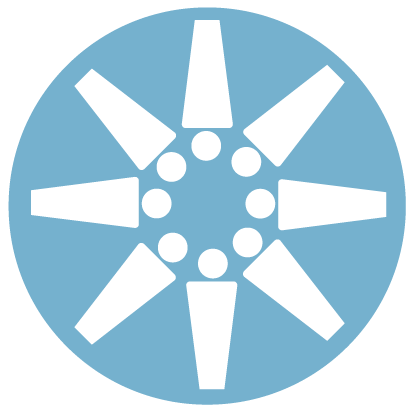
Fostering employee engagement is important at CCOHS. A few years ago, CCOHS introduced bi-monthly Town Hall meetings as a way for employees to interact with the executive team, ask questions, share ideas, and discuss the things that matter to them the most and to help invoke positive changes to the organization.

A mentally healthy workplace is important to CCOHS, and we strive to provide an environment in which people feel protected from psychological harm. This year, CCOHS continued to participate in the Mental Health Commission of Canada’s National Standard of Canada for Psychological Health and Safety in the Workplace’ Case Study Project and encouraged employees to complete PHASE (Psychological Health Awareness Survey for Employees) an online survey used to gather feedback on CCOHS’ organizational efforts to create a mentally healthy workplace. While the survey was hosted in the later part of the fiscal year, the Mental Health @ Work Team will be hosting small, informal discussion groups about the survey’s outcomes with all staff in the spring of 2016.

CCOHS’ Healthy Workplace Team is comprised of employees and managers, and organizes regular activities to help promote healthy habits, team building, community involvement, and encourages positive engagement among the staff. From hosting healthy workplace challenges, volunteer days and lunchtime yoga sessions, the team strives to support and promote active participation by all to help improve health and well-being at work.
Responsibility for the integrity and objectivity of the accompanying financial statements for the year ended March 31, 2016, and all information contained in these statements rests with the management of the Canadian Centre for Occupational Health and Safety (“CCOHS” or the “Centre”). These financial statements have been prepared by management in accordance with Canadian public sector accounting standards.
Management is responsible for the integrity and objectivity of the information in these financial statements. Some of the information in the financial statements is based on management’s best estimates and judgment, and gives due consideration to materiality. To fulfill its accounting and reporting responsibilities, management maintains a set of accounts that provides a centralized record of the Centre’s financial transactions. Financial information submitted in the preparation of the Public Accounts of Canada, and included in CCOHS’ Departmental Performance Report, is consistent with these financial statements.
An Audit Committee appointed by the Council of Governors of CCOHS has reviewed these statements with management and the auditors, and has reported to the Council of Governors. The Council of Governors has approved the financial statements.
Management is also responsible for maintaining an effective system of internal control over financial reporting designed to provide reasonable assurance that financial information is reliable, that assets are safeguarded and that transactions are properly authorized and recorded in accordance with the Financial Administration Act and other applicable legislation, regulations, authorities and policies.
Management seeks to ensure the objectivity and integrity of data in its financial statements through careful selection, training, and development of qualified staff; through organizational arrangements that provide appropriate divisions of responsibility; through communication programs aimed at ensuring that regulations, policies, standards, and managerial authorities are understood throughout CCOHS and through conducting an annual risk-based assessment of the effectiveness of the system of internal control over financial reporting (ICFR).
An assessment for the year ended March 31, 2016 was completed in accordance with the Treasury Board’s Policy on Internal Control and the results and action plans are summarized in the annex.
The system of ICFR is designed to mitigate risks to a reasonable level based on an on-going process to identify key risks, to assess effectiveness of associated key controls, and to make any necessary adjustments.
CCOHS will be subject to periodic Core Control Audits performed by the Office of the Comptroller General and will use the results of such audits to adhere to the Treasury Board Policy on Internal Control.
In the interim, CCOHS has undertaken a risk-based assessment of the system of ICFR for the year ended March 31, 2016, in accordance with the Treasury Board Policy on Internal Control, and the results and action plan are summarized in the annex. The annex is available on CCOHS’ website at the following location: http://www.ccohs.ca/ccohs/reports/html
Raymond Chabot Grant Thornton LLP, the independent auditors for CCOHS, have expressed an opinion on the fair presentation of the financial statements of CCOHS which does not include an audit opinion on the annual assessment of the effectiveness of CCOHS’ internal controls over financial reporting.
Approved by:
Hamilton, Canada
July 20, 2016
Raymond Chabot Grant Thornton LLP
We have audited the accompanying financial statements of the Canadian Centre for Occupational Health and Safety, which comprise the statement of financial position as at March 31 2016, and the statement of operations and net financial position, statement of change in net debt and statement of cash flow for the year then ended, and a summary of significant accounting policies and other explanatory information.
Management is responsible for the preparation and fair presentation of these financial statements in accordance with Canadian public sector accounting standards, and for such internal control as management determines is necessary to enable the preparation of financial statements that are free from material misstatement, whether due to fraud or error.
Our responsibility is to express an opinion on these financial statements based on our audit. We conducted our audit in accordance with Canadian generally accepted auditing standards. Those standards require that we comply with ethical requirements and plan and perform the audit to obtain reasonable assurance about whether the financial statements are free from material misstatement.
An audit involves performing procedures to obtain audit evidence about the amounts and disclosures in the financial statements. The procedures selected depend on the auditor’s judgement, including the assessment of the risks of material misstatement of the financial statements, whether due to fraud or error. In making those risk assessments, the auditor considers internal control relevant to the entity’s preparation and fair presentation of the financial statements in order to design audit procedures that are appropriate in the circumstances, but not for the purpose of expressing an opinion on the effectiveness of the entity’s internal control. An audit also includes evaluating the appropriateness of accounting policies used and the reasonableness of accounting estimates made by management, as well as evaluating the overall presentation of the financial statements.
We believe that the audit evidence we have obtained is sufficient and appropriate to provide a basis for our audit opinion.
In our opinion, the financial statements present fairly, in all material respects, the financial position of the Canadian Centre for Occupational Health and Safety as at March 31, 2016, and the results of its operations, changes in its net debt, and its cash flows for the year then ended in accordance with Canadian public sector accounting standards.
Raymond Chabot Grant Thornton LLP
Chartered Accountants,
Licensed Public Accountants
Ottawa, Canada
June 23, 2016
| 2016 | 2015 | |
|---|---|---|
| $ | $ | |
| Liabilities | ||
Accounts Payable and Accrued Liabilities (Note 8) |
748,980 | 721,631 |
Deferred Revenues – Web Based Subscriptions |
1,201,282 | 1,322,039 |
Vacation Pay and Compensated Leave |
483,926 | 454,382 |
Employee Severance Benefits (Note 10) |
975,488 | 1,063,934 |
Deferred Revenues – Donations (Note 9) |
113,152 | 110,902 |
| Total Liabilities | 3,522,828 | 3,672,888 |
| Financial assets: | ||
Due from the Consolidated Revenue Fund |
733,007 | 801,431 |
Accounts Perceivable (Note 7) |
513,051 | 449,315 |
| Total Financial assets | 1,246,058 | 1,250,746 |
| Net Debt (Note 3) | (2,276,770) | (2,422,142) |
| Non-financial Assets: | ||
Inventory for Resale |
48,447 | 36,553 |
Tangible Capital Assets (Note 6) |
476,925 | 316,950 |
| Total non-financial assets: | 525,372 | 353,503 |
| Net Financial Position | (1,751,398) | (2,068,639) |
The accompanying notes form an integral part of these financial statements.
Approved by:
| 2016 | 2015 | |
|---|---|---|
| $ | $ | |
| Expenses | ||
Operations |
||
Salaries and employee benefits |
7,667,449 | 7,460,000 |
Professional and special services |
1,376,874 | 870,188 |
Accommodation |
676,937 | 676,937 |
Transportation and communications |
225,962 | 181,362 |
Purchased repair and upkeep |
129,883 | 88,476 |
Utilities, materials and supplies |
87,837 | 142,886 |
Information |
81,678 | 71,589 |
Rentals |
51,950 | 27,869 |
|
Total
|
10,298,570 | 9,519,307 |
Administration |
||
Salaries and employee benefits |
453,800 | 490,978 |
Governors and committees |
10,185 | 4,036 |
Travel |
37,439 | 29,911 |
Professional and special services |
50,106 | 4,347 |
Utilities, materials and supplies |
— | 527 |
Rentals |
— | 206 |
|
Total
|
551,530 | 530,005 |
Other expenses |
||
Amortization of tangible capital assets |
61,151 | 33,646 |
Total |
61,151 | 33,646 |
Total expenses |
10,911,251 | 10,082,958 |
Revenues (Note 5) |
||
Proceeds from sales |
3,755,237 | 3,280,865 |
Projects and collaborative agreements |
1,751,861 | 1,125,860 |
Total revenues |
5,507,098 | 4,406,726 |
Net cost of operations before government funding |
(5,404,153) | (5,676,234) |
Government Funding |
||
Net cash provided by government |
4,557,863 | 4,547,983 |
Change in due from the Consolidated Revenue Fund |
(68,424) | 364,788 |
Services provided without charge from other government departments (note 11) |
1,236,722 | 1,197,545 |
Transfer of transition payments for implementing salary payments in arrears (Note 13) |
(4,767) | (239,966) |
Net surplus (cost) of operations after government funding |
317,241 | 194,116 |
Net Financial Position at Beginning of Year |
(2,068,639) | (2,262,755) |
Net Financial Position at End of Year |
(1,751,398) | (2,068,639) |
| 2016 | 2015 | |
|---|---|---|
| $ | $ | |
| Net Surplus of Operations after Government Funding | 317,241 | 194,116 |
| Changes due to Tangible Capital Assets | ||
| Acquisitions of tangible capital assets | (221,126) | (236,158) |
| Amortization of tangible capital assets | 61,151 | 33,646 |
| Total Change Due to Tangible Capital Assets | (159,975) | (202,512) |
| Increase in inventory | (11,894) | (6,570) |
| Net decrease (increase) in net debt | 145,372 | (14,966) |
| Net debt, at Beginning of Year | (2,422,142) | (2,407,176) |
| Net debt, at End of Year | (2,276,770) | (2,422,142) |
| 2016 | 2015 | |
|---|---|---|
| $ | $ | |
| Operating Activities | ||
Net cost of operations before government funding |
5,404,153 | 5,676,234 |
Non-cash items: |
||
Amortization of tangible capital assets (Note 6) |
(61,151) | (33,646) |
Services received without charge from other government departments (Note 11) |
(1,236,722) | (1,197,545) |
| Transition Payments for implementing salary payments in arrears (Note 13) | 4,767 | 239,966 |
| Variations in Statement of Financial Position: | ||
Increase in accounts payable & accrued liabilities |
(27,349) | (387,158) |
Decrease (Increase) in deferred revenue |
120,757 | (130,800) |
Increase in vacation pay and compensatory leave |
(29,544) | (12,249) |
Decrease in employee severance benefits |
88,446 | 80,286 |
Increase in deferred revenues - donations |
(2,250) | - |
Increase in accounts receivable |
63,736 | 70,167 |
Increase in inventory for resale |
11,894 | 6,570 |
| Cash used in operating activities | 4,336,737 | 4,311,825 |
| Capital investing activities | ||
Acquisitions of tangible capital assets |
221,126 | 236,158 |
| Net cash provided by Government of Canada | 4,557,863 | 4,547,983 |
| 2016 | 2015 | |
|---|---|---|
| $ | $ | |
| Accrued benefit obligation, beginning of year | 1,063,934 | 1,144,220 |
| Expense for the year | 51,627 | 89,831 |
| Benefits paid during the year | (140,073) | (170,117) |
| Accrued benefit obligation, end of year | 975,488 | 1,063,934 |
CCOHS is related as a result of common ownership to all Government departments, agencies, and Crown Corporations. CCOHS enters into transactions with these entities in the normal course of business and on normal trade terms. During the year, CCOHS received common services which were obtained without charge from other Government departments as disclosed below.
| Internal Services | Health and Safety | 2016 | 2015 | |
|---|---|---|---|---|
| $ | $ | $ | $ | |
| Salaries and employee benefits | 2,866,564 | 5,254,685 | 8,121,249 | 7,950,978 |
| Professional and Special Services | 233,368 | 1,203,797 | 1,437,165 | 878,571 |
| Accommodation | 219,769 | 457,168 | 676,937 | 676,937 |
| Transportation and communications | 150,886 | 112,515 | 263,401 | 211,275 |
| Information | 38,403 | 43,275 | 81,678 | 71,590 |
| Purchased repair and upkeep | 39,336 | 90,547 | 129,883 | 88,476 |
| Utilities, materials and supplies | 25,813 | 73,918 | 99,731 | 149,983 |
| Rental | 33,769 | 18,181 | 51,950 | 28,074 |
| Other expenditures | - | 49,257 | 49,257 | 27,076 |
| Total Expenses | 3,607,908 | 7,303,343 | 10,911,251 | 10,082,960 |
| Revenues | - | - | 5,507,098 | 4,406,726 |
| Cost from continuing operations | 5,404,153 | 5,676,234 |